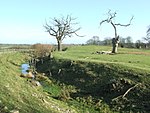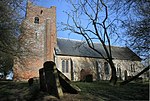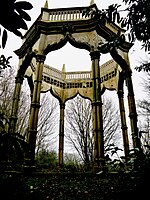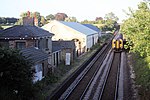Denham, West Suffolk
Borough of St EdmundsburyCivil parishes in SuffolkSuffolk geography stubsVillages in Suffolk

Denham is a village and civil parish in the West Suffolk district of Suffolk in eastern England. Located around five miles west of Bury St Edmunds, in 2005 its population was 170, increasing to 171 at the 2011 Census. The parish also includes the hamlet of Denham End, as well as the remains of Denham Castle, a motte-and-bailey structure. The parish council is shared with neighbouring Barrow. The mediaeval church of St Mary's was restored in 1846 and is a grade II* listed building. In the chapel is a large canopied table monument to MP Sir Edward Lewkenor and his wife of Denham Hall who both died in 1605 of smallpox.
Excerpt from the Wikipedia article Denham, West Suffolk (License: CC BY-SA 3.0, Authors, Images).Denham, West Suffolk
Barrow Road, West Suffolk
Geographical coordinates (GPS) Address Nearby Places Show on map
Geographical coordinates (GPS)
| Latitude | Longitude |
|---|---|
| N 52.222 ° | E 0.571 ° |
Address
Barrow Road
Barrow Road
IP29 5EJ West Suffolk
England, United Kingdom
Open on Google Maps










